The advent of 5G and the upcoming development of 6G technology have set the stage for a new era in connectivity and digital experiences. As industries across the globe transition to faster, more reliable networks, one area that will see significant transformation is the laptop screen extension. Laptop users frequently extend their screens for productivity, gaming, content creation, and remote work. The higher data transmission rates, lower latency, and improved connectivity offered by 5G and 6G networks promise to radically enhance this experience.
This blog will explore the potential impact of 5G and 6G technologies on laptop screen extension, offering insights into how these developments will shape the future of laptop-based multitasking, remote collaboration, and digital entertainment. We will also delve into the emerging concepts of laptop screen extension in intelligent services and digital twin technology, expanding the scope of screen extension use cases.

1. The Evolution of Laptop Screen Extension
Before diving into how 5G and 6G will influence laptop screen extension, it’s important to understand what screen extension is and why it’s crucial for many users.
A laptop screen extension is the practice of connecting additional monitors or displays to a laptop, effectively expanding the screen real estate available. This allows users to work across multiple displays simultaneously, enhancing productivity by reducing the need to switch between windows or applications. Whether it’s used by developers, designers, gamers, or professionals in remote work settings, laptop screen extensions are a vital tool for improving workflow efficiency.
In the past, the main limitation of laptop screen extension came from the need for physical connections (cables) and the restricted bandwidth of older wireless protocols. Enter the world of 5G and 6G, where wireless data transmission will reach unprecedented levels, and screen extension will take a giant leap forward.
2. 5G Technology: Unlocking New Possibilities for Laptop Screen Extension
Faster Data Transmission Rates
One of the key benefits of 5G is its ability to transmit data at incredibly high speeds—up to 100 times faster than 4G. For laptop screen extension, this translates into faster and smoother connections between a laptop and external displays.
In current setups, particularly wireless ones, transmitting high-resolution video and graphical data between a laptop and an extended screen can lead to delays or a loss of quality. This is particularly problematic when using large 4K or even 8K monitors, as the existing wireless technology struggles to keep up. With 5G, these issues are significantly mitigated. The higher bandwidth will allow for seamless transmission of ultra-high-definition video, making it easier to extend your laptop screen to large monitors wirelessly without compromising on performance.
For instance, with 5G, users can effortlessly project content from their laptops to external monitors in real-time, ideal for tasks such as video editing, 3D modeling, or gaming, where every millisecond of delay matters.
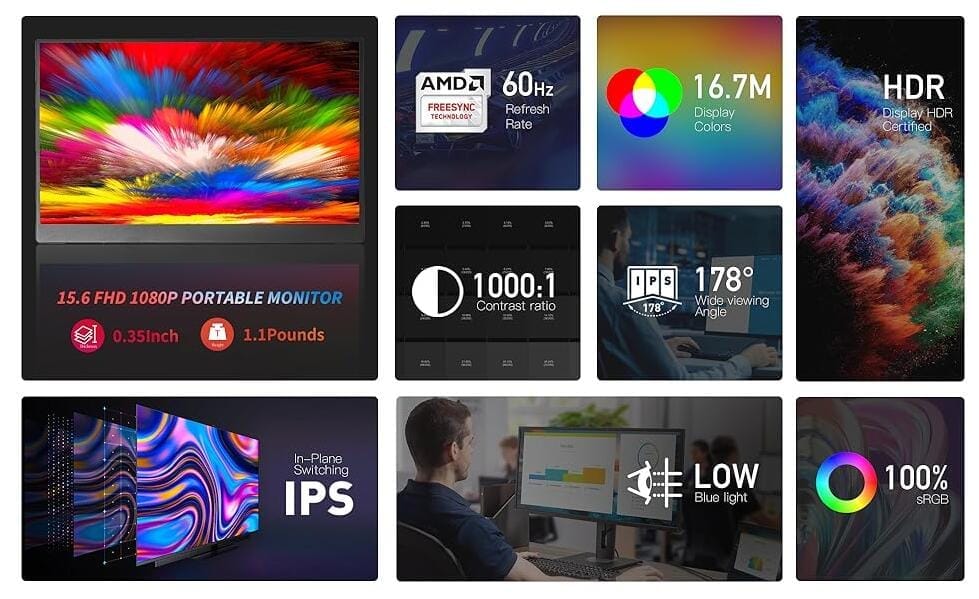
Lower Latency for Real-Time Interaction
5G is not just about speed; it also offers drastically reduced latency. Latency refers to the delay between sending and receiving data, and it can significantly affect the user experience when working with laptop screen extension.
In current wireless connections, especially over Wi-Fi, latency can cause noticeable delays when interacting with an extended display. With 5G, latency can drop to as low as 1 millisecond, enabling near-instantaneous responses between your laptop and external monitor. This real-time interaction is particularly beneficial in gaming, where fast reaction times are critical, or in live presentations, where smooth transitions between screens are necessary.
For professionals who rely on a laptop screen extension for multitasking, this low latency will mean faster workflow processes and an overall more fluid user experience.
Greater Connection Stability
Another advantage of 5G is its ability to provide a more stable and reliable connection. This stability will be crucial for laptop screen extension in settings where the extended display is used for high-stakes tasks such as coding, video conferencing, or remote diagnostics.
In busy environments with multiple devices connected to the same network, such as offices or conference rooms, Wi-Fi networks can become congested, leading to signal drops or interference. With 5G, network congestion is less likely due to its ability to handle many more connected devices simultaneously. This means fewer interruptions and smoother performance when using a wireless laptop screen extension.
3. 6G: The Future of Wireless Laptop Screen Extension
While 5G is still in the process of being fully rolled out globally, researchers and technologists are already looking toward 6G, which promises even more groundbreaking improvements in speed, latency, and connectivity. 6G will not only build upon the advancements made by 5G but also bring entirely new features that could redefine the concept of laptop screen extension.
Ultra-High Data Speeds and Capacity
If 5G offers speed that’s 100 times faster than 4G, then 6G could offer data transmission rates up to 100 times faster than 5G. This leap in speed will open the door for laptop screen extension that supports unprecedented levels of data exchange, enabling 16K or even 32K video resolutions to be transmitted wirelessly.
For instance, imagine working on ultra-high-definition video projects or running complex simulations where each frame requires enormous amounts of data to be processed and displayed. With 6G, a laptop screen extension will allow these tasks to be performed wirelessly in real-time, with no compromise in quality or speed.
Virtually Zero Latency
While 5G offers latency reductions to as low as 1 millisecond, 6G is expected to push this even further to the point of “virtually zero latency.” This means that interactions between your laptop and the extended screen will be instantaneous, allowing for real-time collaboration on a scale we’ve never seen before.
For example, with laptop screen extension enabled by 6G, remote teams could work on the same project, across different continents, as though they were all in the same room. Changes made on one screen could instantly appear on another, with no perceptible delay.
Integrated AI and IoT Connectivity
6G is expected to incorporate artificial intelligence (AI) and the Internet of Things (IoT) into its infrastructure. This could dramatically enhance laptop screen extension experiences, allowing for more intelligent, context-aware displays that can adjust according to user preferences or environmental conditions.
Imagine using a laptop screen extension in an IoT-enabled smart office, where the system automatically optimizes your screen setup based on the tasks you’re working on. AI could dynamically adjust screen resolution, brightness, or orientation, depending on whether you’re working on a presentation, analyzing data, or holding a video conference.
4. Intelligent Services for Laptop Screen Extension
As laptop screen extension becomes increasingly powered by 5G and 6G networks, we can expect the rise of intelligent services that further streamline and customize the user experience.
Personalized Workspaces
With AI integration into 5G and 6G networks, laptop screen extensions will become smarter and more responsive to user needs. AI-driven intelligent services can optimize screen settings based on a user’s behavior and work habits. For instance, the laptop could automatically adjust the layout and positioning of extended screens depending on whether the user is working on a spreadsheet, attending a video conference, or editing media files.
In addition, AI could help manage multiple external screens, distributing workloads intelligently between displays and ensuring that resources are allocated efficiently. This will improve multitasking, as users can work with the assurance that their screen setup will always be optimized for their tasks.
Cloud-Based Workflows
Another feature of intelligent services could be the integration of cloud-based screen extensions. Instead of relying solely on the physical laptop to control external monitors, intelligent services could utilize cloud computing to extend and manage screens remotely. This opens up possibilities for collaborative work where multiple users can contribute to the same screen extension setup, regardless of their physical location.
For remote workers or globally distributed teams, these cloud-based intelligent services could provide a synchronized, efficient workspace that adapts in real time to each user’s input.
5. Digital Twin and Laptop Screen Extension
Digital twin technology, which refers to creating virtual replicas of physical objects or systems, is poised to make a significant impact on laptop screen extension. With the power of 5G and 6G, real-time data can be used to mirror physical setups in a digital environment, enhancing both work and entertainment experiences.
Real-Time Simulation and Testing
For professionals in fields like engineering, architecture, or media production, the ability to create a digital twin of their work environment offers tremendous benefits. Using a laptop screen extension combined with 5G or 6G networks, these professionals can simulate, test, and interact with their digital twin in real-time.
Imagine an architect using a laptop screen extension to project the digital twin of a building design. They could analyze different structural configurations, experiment with materials, and make adjustments instantly, all while viewing the effects of those changes on their extended screen in real-time.
Enhanced Remote Work Collaboration
Digital twin technology will also elevate remote work experiences by allowing users to collaborate on a virtual replica of a shared project. Using a laptop screen extension supported by 5G and 6G, team members can interact with the same digital twin from different locations, making real-time adjustments to the virtual model as if they were all in the same room. This will be especially useful for industries that rely on rapid prototyping, such as automotive design, manufacturing, and healthcare.
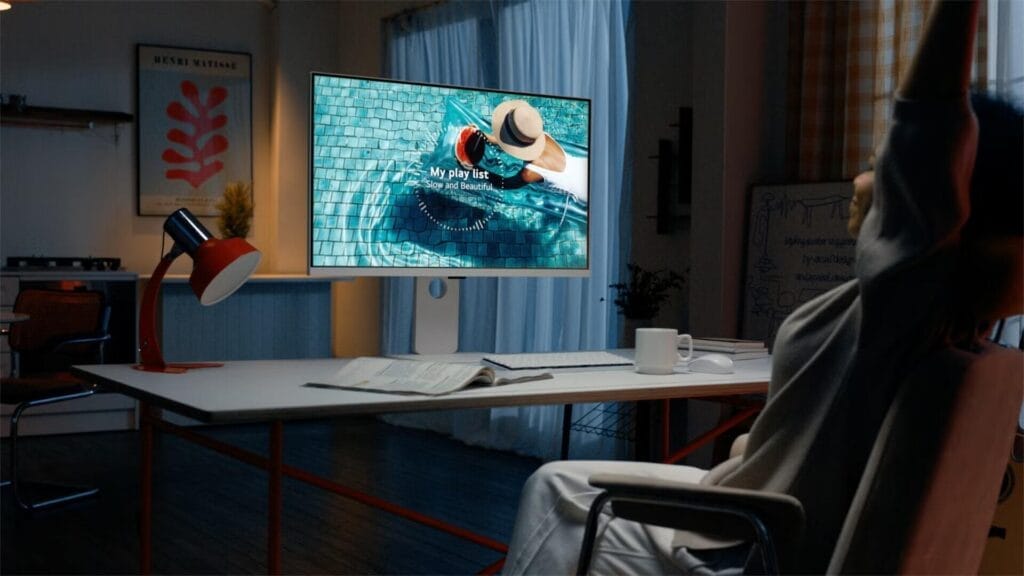
6. 5G and 6G for Collaborative Workflows
In the modern workplace, collaboration is key. Many professionals rely on extended screens to juggle multiple projects or interact with team members across different platforms. With 5G and 6G, collaboration can become even more dynamic, as screen extension technology will facilitate seamless real-time interaction.
Imagine a laptop screen extension setup where multiple team members can contribute to a single project in real-time. Changes made on one team member’s screen would instantly appear on another, with no delay, thanks to the low latency and high data transmission rates of 5G and 6G networks.
7. The Future of Laptop Screen Extension with 5G and 6G
The potential of 5G and 6G technology to enhance laptop screen extension is enormous. From faster data transmission and reduced latency to more stable connections, real-time collaboration, and intelligent services, these advancements will redefine how professionals, gamers, and everyday users interact with their laptop screens.
As we move toward a future where wireless technology becomes the standard for extended displays, users can look forward to a more streamlined, efficient, and productive laptop experience. Whether you’re working from home, collaborating with global teams, or enjoying high-definition entertainment, laptop screen extension powered by 5G and 6G is poised to transform your digital life.
In summary, the arrival of 5G and the future development of 6G will revolutionize laptop screen extension by enhancing speed, reducing latency, and providing more robust connectivity. Combined with intelligent services and digital twin technology, the future of laptop screen extension has never looked brighter.
Discount product recommendation
-
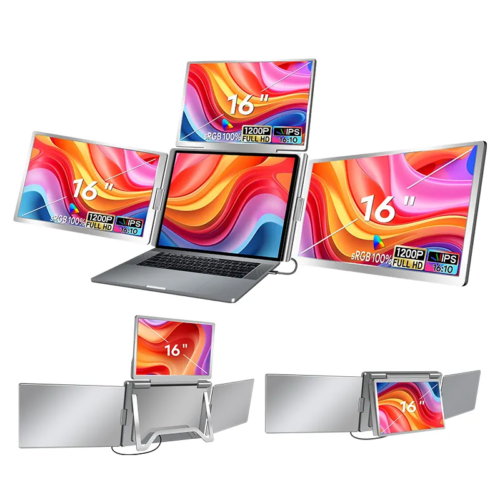 ONext 100% SRGB 16 Inch Quad Monitor 1 Cable for Trifold Laptop Monitors, Vibrant 3-Display for Windows & MacOS
ONext 100% SRGB 16 Inch Quad Monitor 1 Cable for Trifold Laptop Monitors, Vibrant 3-Display for Windows & MacOS -
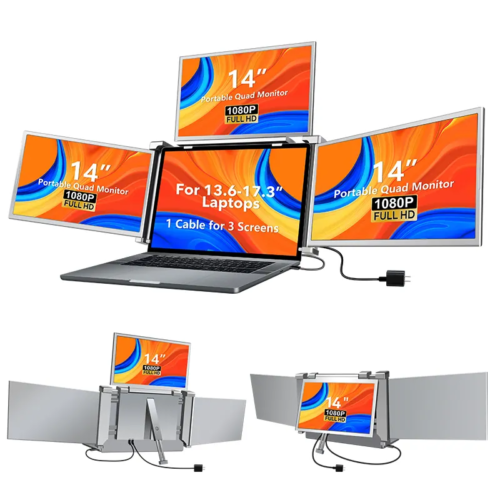 ONext 14″ Quad Monitor Laptop Screen Extender – FHD 1080P, 1 Cable for 3 Screens, Portable IPS for 13.6″-17.3″ Laptops (Win/Mac M1-M3)
ONext 14″ Quad Monitor Laptop Screen Extender – FHD 1080P, 1 Cable for 3 Screens, Portable IPS for 13.6″-17.3″ Laptops (Win/Mac M1-M3) -
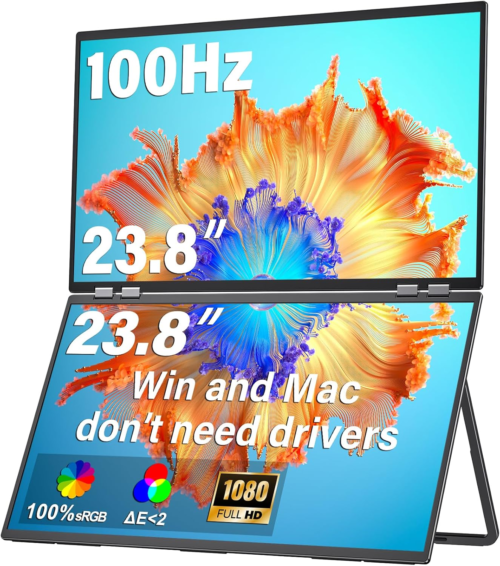 ONext 23.8″ FHD100Hz 100% sRGB Dual Screen Laptop Extra Monitor – 315° Adjustable for Work & Gaming
ONext 23.8″ FHD100Hz 100% sRGB Dual Screen Laptop Extra Monitor – 315° Adjustable for Work & Gaming -
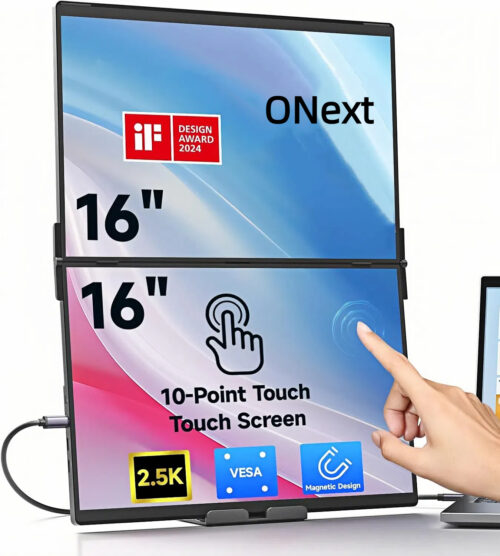 ONext 16″ Laptop Screen Extender Foldable Dual Stacked Portable Monitor with Built-in Hub, Magnetic Design, Single Cable for 1080P Triple Monitor Setup
ONext 16″ Laptop Screen Extender Foldable Dual Stacked Portable Monitor with Built-in Hub, Magnetic Design, Single Cable for 1080P Triple Monitor Setup -
 ONext 18.5″ Laptop Dual Screen Monitor 1080P 100Hz, Foldable Double Screen Laptop Display for Win/Mac
ONext 18.5″ Laptop Dual Screen Monitor 1080P 100Hz, Foldable Double Screen Laptop Display for Win/Mac -
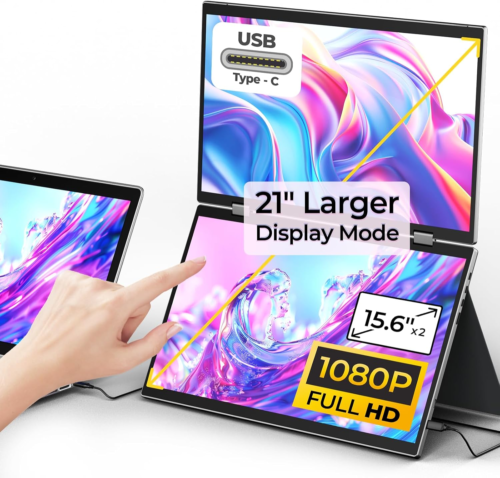 ONext 15.6″ Dual Screen 1080P FHD Stacked Folding Triple Monitor HDMI USB-C Portable Dual Monitor for Laptop Windows Mac (No Driver Needed)
ONext 15.6″ Dual Screen 1080P FHD Stacked Folding Triple Monitor HDMI USB-C Portable Dual Monitor for Laptop Windows Mac (No Driver Needed)